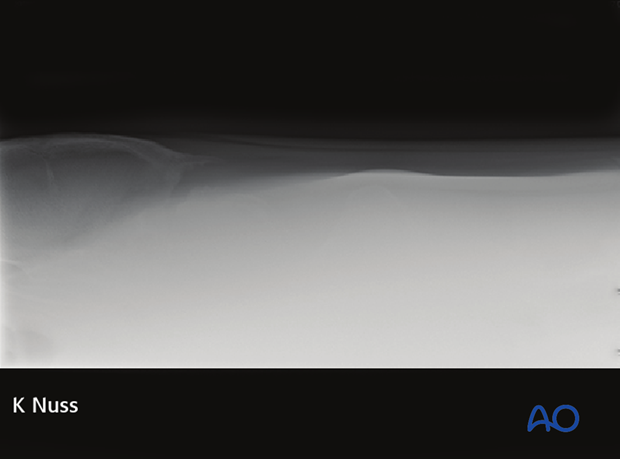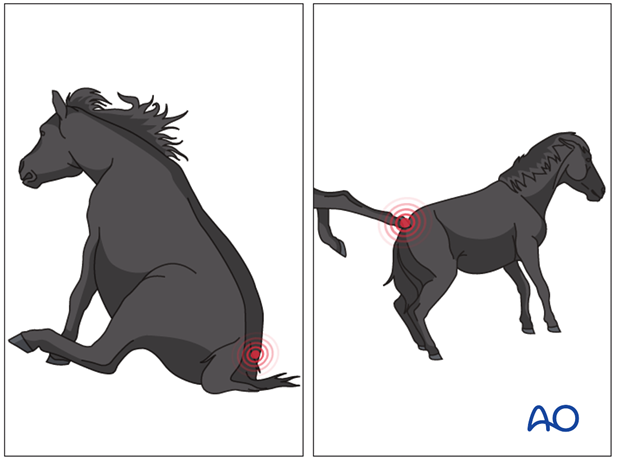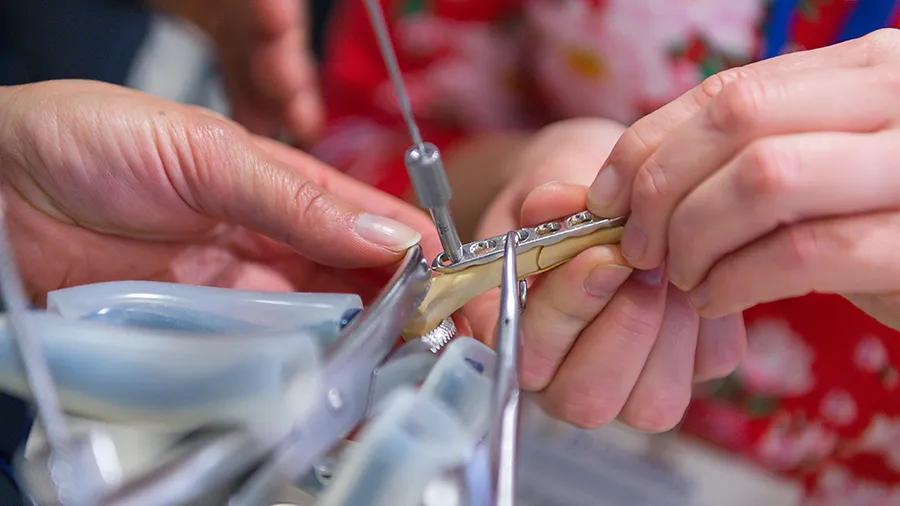Sacral fractures
Fracture of the sacrococcygeal spine may involve the sacrum vertebra.

Etiology
- Rearing and falling over backward
- Collisions and kicks by other horses

Clinical signs of sacral vertebral fractures
Clinical signs of sacral vertebral fractures depend on:
- Degree of bony disruption
- Instability at the fracture site
- Severity to the trauma to the cord
Clinical signs can be:
- Mild to severe ataxia
- Pain and swelling over the croup and tail head, tail weakness or paralysis, decreased anal tone, retention of feces, bladder distention, and urine dribbling
Imaging
Radiographs:
- The growth plates and their closure times must be taken into consideration when interpreting the radiographic images in foals and young adult horses
- Fracture lines are often poorly visualized
Radiographic examination:
- Lateral radiographs
- Ventrodorsal radiographs are usually unrewarding
Computertomography:
- Complete CT of the thoracolumbar/sacrococcygeal region is possible in foals, small horses, ponies and donkeys.
Myelography:
- Possible in foals, small horses, ponies, and donkeys
MRI:
- A complete examination is possible in foals, small horses, ponies and donkeys.













